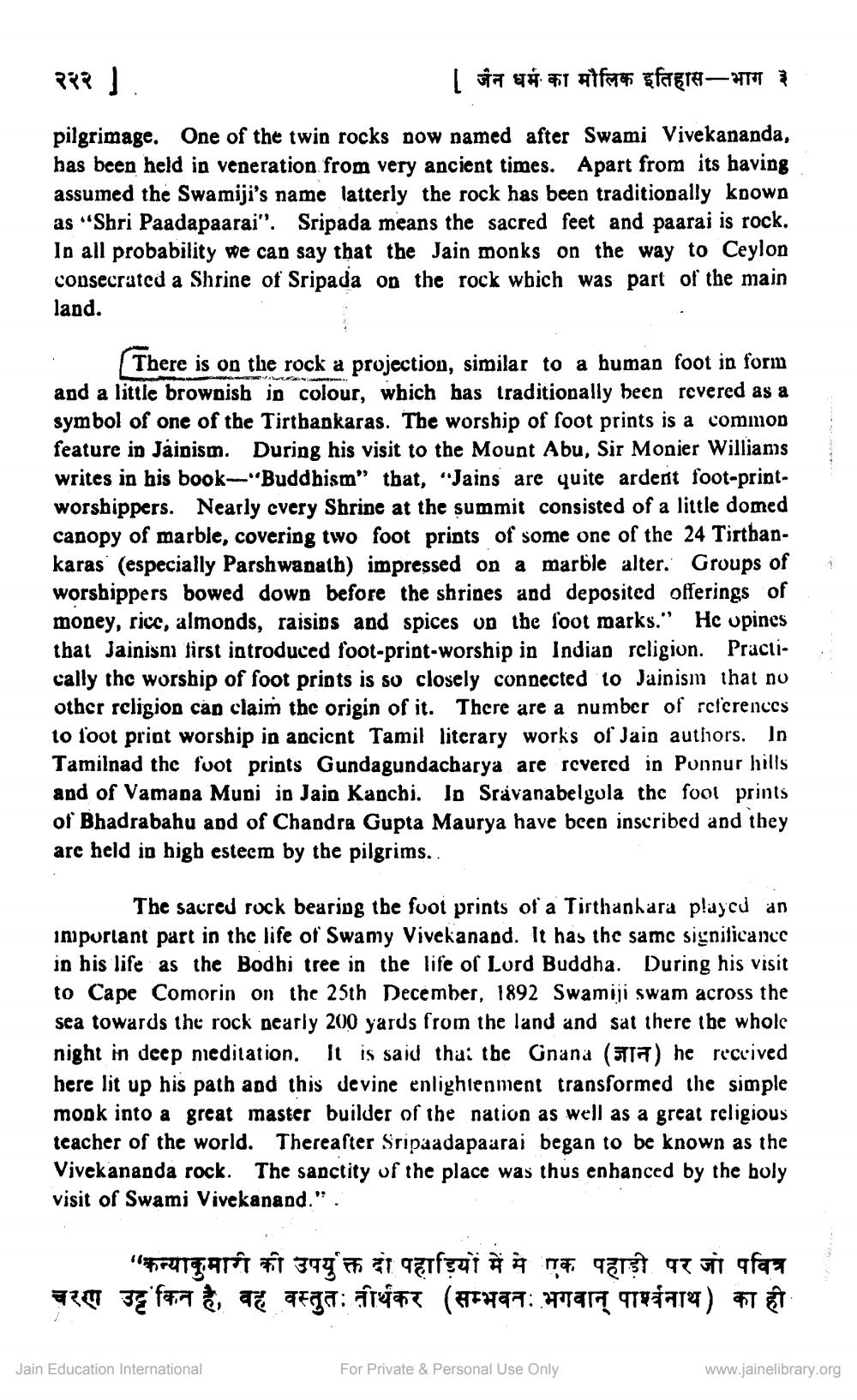________________
888)
। जैन धर्म का मौलिक इतिहास-भाग ३
pilgrimage. One of the twin rocks now named after Swami Vivekananda, has been held in veneration from very ancient times. Apart from its having assumed the Swamiji's name latterly the rock has been traditionally kpown as "Shri Paadapaarai". Sripada means the sacred feet and paarai is rock. lo all probability we can say that the Jain monks on the way to Ceylon consecrated a Shrine of Sripada on the rock wbich was part of the main land.
There is on the rock a projection, similar to a human foot in form and a little brownish in colour, which has traditionally been revered as a symbol of one of the Tirtbankaras. The worship of foot prints is a common feature in Jainism. During his visit to the Mount Abu, Sir Monier Williams writes in his book--"Buddhism” that, “Jains are quite ardent foot-printworshippers. Nearly cvery Shrine at the summit consisted of a little domed canopy of marble, covering two foot prints of some one of the 24 Tirthankaras (especially Parshwanath) impressed on a marble alter. Groups of worshippers bowed down before the shrines and deposited offerings of money, rice, almonds, raisips and spices on the foot marks." He opines that Jainisni first introduced foot-print-worship in Indian religion. Practically thc worship of foot prints is so closely connected to Jainism that no other religion can claim the origin of it. There are a number of references to foot print worship in ancicnt Tamil literary works of Jaio authors. In Tamilnad the fuot prints Gundagundacharya are rovered in Punnur hills and of Vamana Muni ip Jain Kanchi. Io Srávanabelgola the foot prints of Bhadrabahu and of Chandra Gupta Maurya have been inscribed and they are held in high esteem by the pilgrims..
The sacred rock bearing the foot prints of a Tirthanhara playcu an important part in the life of Swamy Vivekanand. It has the same significance in his life as the Bodhi tree in the life of Lord Buddha. During his visit to Cape Comorin on the 25th December, 1892 Swamiji swam across the sea towards the rock nearly 200 yards from the land and sat there ibe whole night in deep niedilation. It is said thai the Gnana (5717) he received here lit up his path and this devine enlightenment transformed the simple mook into a great master builder of the nation as well as a great religious teacher of the world. Thereafter Sripaadapaarai began to be known as the Vivekananda rock. The sanctity of the place was thus enhanced by the holy visit of Swami Vivekanand." .
"कन्याकुमारी की उपर्युक्त दो पहाड़ियों में से एक पहाड़ी पर जो पवित्र चरण उट्ट किन है, वह वस्तुतः तीर्थकर (सम्भवतः भगवान् पार्श्वनाथ) का ही
Jain Education International
For Private & Personal Use Only
www.jainelibrary.org




